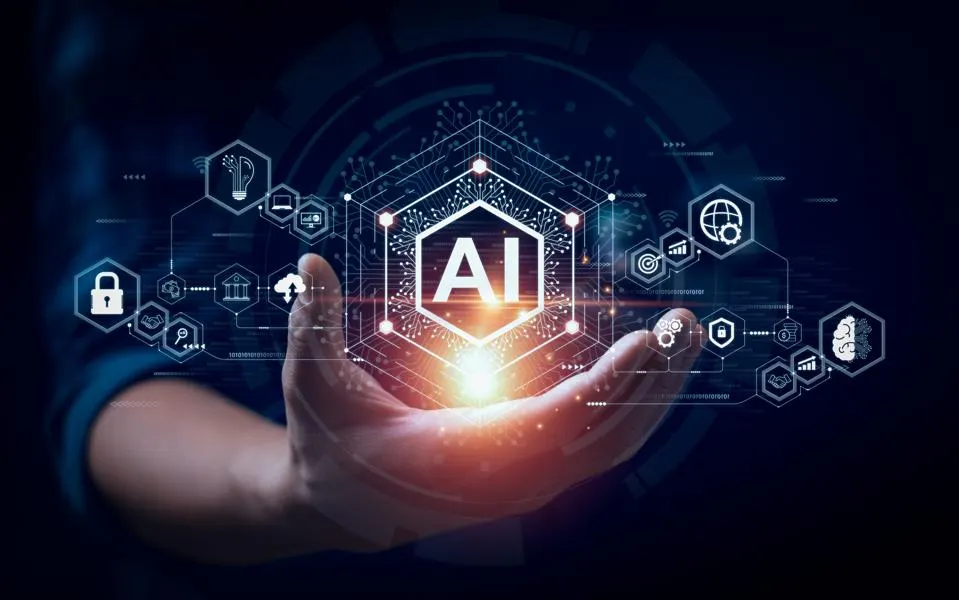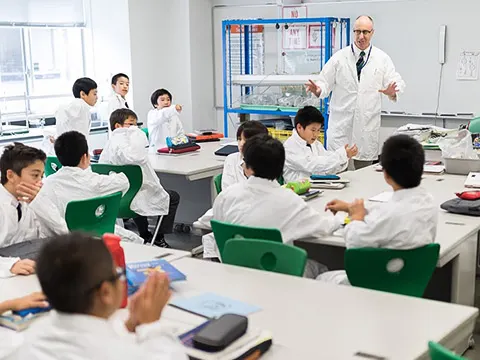
Recently, Mr. Kim, the 8th-grade English teacher, encouraged students to use artificial intelligence to enhance their learning. This came as a big surprise to students, as AI had long been associated with cheating, and the idea of a teacher promoting cheating seemed ironic. Similarly, at SMIS, artificial intelligence—also known as AI—has always been a controversial topic in the classroom. Some students have used it responsibly to support and improve their learning, while others have relied on it to complete their assignments without genuine effort.
As AI became more advanced and its popularity grew within the school, the number of students misusing it naturally increased. With the uncertainty of whether students were using AI to learn or simply to get good grades effortlessly, the controversy deepened.
The story goes back to when Mr. Kim became the first to openly encourage and implement AI use in class. While many other teachers remained hesitant to embrace AI, Mr. Kim was the first to incorporate AI chatbots into the learning process.
As more teachers began allowing limited AI use, mainly for grammar and vocabulary support—English class became one of the first subjects at SMIS to experiment with open access to AI. Mr. Kim permitted students to use AI, though not all assignments and tests allowed it. He explained that he conducts some assessments that involve AI, while others strictly prohibit it, in order to collect data comparing students’ writing with and without AI. This approach raised a major question: “Has the students’ writing improved?”
To explore this question, Mr. Kim was interviewed. “How has AI impacted the students’ writing?” In response, he said the results are mixed. Some students have used AI to improve their writing in terms of structure, clarity, and revision. However, others have become overly dependent on it. Overall, the work students turn in appears stronger, but it doesn’t always reflect their actual writing abilities. The interview offered insight into the teachers’ perspective on AI’s impact, but to fully understand the situation, it’s also important to consider students’ perspectives and what’s actually happening in the classroom.
Mr. Kim’s encouragement of OpenAI came as a surprise to students who viewed AI as a form of cheating. At the start of the year, all assessments were done with pencil and paper. Later, Mr. Kim began switching between paper-based tests and unrestricted computer use, and sometimes digital documents with strict controls. Regarding this change, Mr. Kim explained, “At the start of the year, we needed to get a real baseline—what students could do without any help. So we returned to traditional writing, which wasn’t ideal, but necessary to assess authentic ability.”
While some teachers like Mr. Kim actively integrate AI into their teaching, others have chosen not to. Ms.Park, the 9th grade math teacher at Korean School in Japan , has not incorporated AI into his assessments since the beginning of the year. All of his tests have been conducted on paper. In this comparison she served as a prime example of traditional classroom management. However She said, “I tried to give online tests and homework but it looked like students are able to focus and be more productive when it is offline. Also it removes all the variables of cheating.” While some teachers are more open to AI others like Ms.Park still prefer and value the traditional classroom setting.
While some teachers implement AI and others do not, both approaches offer students opportunities to demonstrate their writing skills. However, the answer to whether AI improves learning isn’t simple. Some students have grown in their ability to revise and develop ideas—thanks to AI’s feedback. Others have become overly reliant, submitting work that doesn’t reflect their true capabilities.
Although teachers cannot definitively say whether AI has led to significant student growth, the majority of students believe that AI is unfair and does not represent their actual ability. A survey of 62 students found that 42 believe AI usage is unfair. However, another survey revealed that more than half of the students believe AI helps them academically. To better understand the student viewpoint, a few students were interviewed. Ishan Dogra (Class of ’29) said, “I personally use AI but only for minor and mechanical changes like spell check or grammar, and I think students using AI to generate a whole essay that is proficient in a few seconds raises concerns of academic integrity, while others spend their time creating a piece of writing.” Similarly, Junyoung Suh (Class of ’29) said, “I feel like the current state of AI has gotten a little out of hand and it harms people who do it honestly.”
AI has both positive and negative effects in the classroom. On the positive side, AI helps students when they’re stuck or confused. It can break down difficult questions, explain tricky grammar, and suggest improvements for writing. Some students use AI to ask follow-up questions or revise their work after class. In this way, AI acts almost like a second teacher—available anytime, anywhere. For students who genuinely want to learn and improve, AI can be a highly useful tool.

However, not everyone uses AI responsibly. Some students copy and paste AI-generated responses without understanding them. Instead of thinking critically, they rely on AI to complete the work. This results in writing that doesn’t reflect the student’s real skills. Teachers often can’t tell whether the work is authentic, which leads to issues with trust and grading.
Another problem is the inconsistency in AI rules between classes. Some teachers allow grammar tools or light AI assistance, while others ban AI altogether. This lack of clear, consistent rules makes it hard for students to know what is acceptable. Without clarity, students can either become confused or take advantage of the situation.
AI can be a powerful learning tool—but only if students use it responsibly and teachers provide clear guidance. Otherwise, it becomes more of a shortcut than an educational resource.
In the end, the rise of AI in classrooms is not just a technological issue. It’s a matter of learning, responsibility, integrity, and balance. It’s unrealistic to completely avoid AI or to fully restrict it. Instead, AI’s impact depends on how it is introduced, monitored, and used by both students and teachers. To maintain academic integrity while embracing innovation, the school must step up and clearly define boundaries. In fact, educators at St. Mary’s have been working on establishing such guidelines for years, and a new policy is expected to be released next year.
